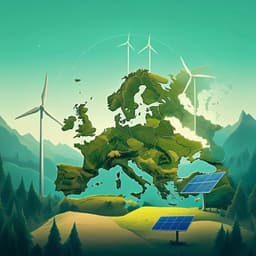
Transportation
Cross-cutting scenarios and strategies for designing decarbonization pathways in the transport sector toward carbon neutrality
R. Zhang and T. Hanaoka
Explore groundbreaking research by Runsen Zhang and Tatsuya Hanaoka that reveals pathways and strategies for achieving a carbon-neutral transport sector in China. This study utilizes a regional transport-energy integrated model to assess low-carbon policy measures and highlights the importance of a balanced policy mix for deep decarbonization.
Playback language: English
Related Publications
Explore these studies to deepen your understanding of the subject.







